NRR:中国西南医科大学附属医院江涌和彭建华团队发现BRD4可调控蛛网膜下腔出血后神经元铁死亡
撰文:江涌,彭建华,卢鹏,张帆
蛛网膜下腔出血后早期脑损伤阶段继发神经炎症、血脑屏障破坏、氧化应激和神经元凋亡等病理生理改变[1]。其中,铁死亡(Ferroptosis)是细胞内自由基过度积累引发的一种新的可控程序性死亡形式,在蛛网膜下腔出血的发生发展中扮演了重要的角色,其会引起神经元死亡和组织水肿,不利于预后。抑制铁死亡进而减轻蛛网膜下腔出血后神经损伤这一策略具有潜在的治疗价值,但对内在机制的研究仍显苍白[2, 3]。含溴结构域蛋白4(BRD4)与中枢神经系统疾病关系密切,其主要功能是调节炎症反应[4]。既往的研究发现,BRD4是铁死亡的相关基因,抑制BRD4可通过促进铁蛋白自噬或调节铁凋亡相关基因诱导铁死亡[5]。但BRD4调节铁死亡的确切机制尚不明确。在蛛网膜下腔出血中探讨BRD4与铁死亡的关系有助于深入剖析蛛网膜下腔出血后的病理过程,并据此改变神经元死亡的命运。
中国西南医科大学附属医院江涌和彭建华团队在《中国神经再生研究(英文)》(Neural Regeneration Research)上发表了题为“Bromodomain-containing protein 4 knockdown promotes neuronal ferroptosis in a mouse model of subarachnoid hemorrhage”的研究,发现在蛛网膜下腔出血中抑制神经元BRD4可通过加强铁自噬来诱导神经元铁死亡的发生,进而加重早期和长期神经功能的损伤。进一步探索发现,BRD4的抑制可能是通过Raf-1/ERK1/2通路来实现这一调控的。文章提示,BRD4可在蛛网膜下腔出血后发挥神经保护作用,抑制铁死亡可能成为治疗和早期管理蛛网膜下腔出血的潜在有效治疗方法。
铁死亡是蛛网膜下腔出血的重要病理改变之一。江涌和彭建华等发现蛛网膜下腔出血后脑组织中BRD4的表达下降,之后检测了代谢物脂质过氧化产物丙二醛的水平。结果发现,其在蛛网膜下腔出血后48h显著升高。同时蛋白印迹结果证实,抗铁死亡关键蛋白谷胱甘肽过氧化物酶4,溶质载体家族7成员11(SLC7A11),辅酶Q10同源物B(CoQ10B)均表达减弱(图1)。这表明蛛网膜下腔出血激活了铁死亡相关通路,导致铁死亡的发生。后续使用氧合血红蛋白诱导HT-22神经元细胞系模拟蛛网膜下腔出血,并以投射电镜、蛋白印迹、免疫荧光染色等技术手段进一步证实了前述发现。
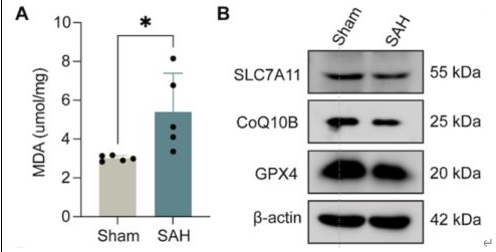
图1:蛛网膜下腔出血后铁死亡相关通路被激活(图源:Lu et al., Neural Regen Res, 2026)
江涌和彭建华等使用铁死亡抑制剂Ferrostatin-1(Fer-1),结果发现Fer-1可抑制铁死亡并提高氧合血红蛋白刺激后神经元的存活率。接下来为明确BRD4与神经元铁死亡的关系,使用shRNA慢病毒沉默神经元BRD4的表达。结果发现敲低BRD4可加重氧合血红蛋白刺激下神经元的铁死亡,加剧脂质过氧化积累,抑制谷胱甘肽过氧化物酶4表达(图2)。
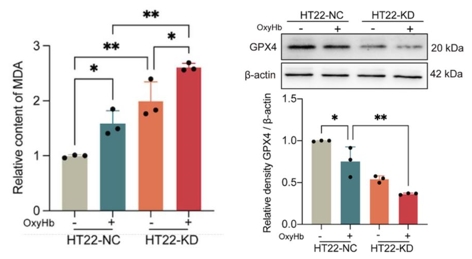
图2敲低BRD4可加重氧合血红蛋白刺激后HT-22细胞铁死亡(图源:Lu et al., Neural Regen Res, 2026)
铁死亡的本质涉及脂质过氧化,这与铁的过度积累关系密切。因此首先测量了Fe2+的含量,发现敲低BRD4可加剧氧合血红蛋白诱导的铁积累。FerroOrange是一种选择性结合铁离子的荧光探针,利用亚铁染色技术发现,氧化血红蛋白引发了亚铁的显著积累,当BRD4被敲除时,这种积累会增强。重要的是,FerroOrange与溶酶体标记lysotracker共定位,这表明BRD4可能通过溶酶体途径诱导Fe2+的释放(图3)。最近的研究证实了铁蛋白自噬是铁死亡的一个强有力的触发因素[6]。因此推测,BRD4可能通过铁蛋白自噬调节HT-22细胞的铁死亡,qPCR分析显示,抑制BRD4可诱导凋亡相关基因的表达(NC0A4,SAT1)和自噬相关基因(LC3B,Atg4d,Atg101,ATG16L)的表达。此外,蛋白印迹结果显示,敲低BRD4可加剧氧合血红蛋白诱导的低水平自噬载体p62和FTH1蛋白表达(图3)。基于上述数据,作者发现BRD4抑制通过促进铁自噬诱导氧合血红蛋白刺激后HT-22细胞铁死亡。
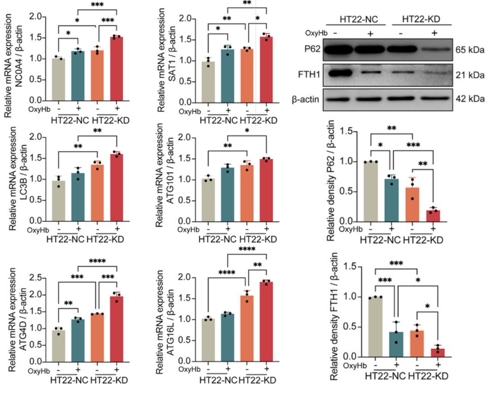
图3 BRD4抑制通过促进铁自噬诱导氧合血红蛋白刺激后HT-22细胞铁死亡(图源:Lu et al., Neural Regen Res, 2026)
为探索BRD4如何影响铁蛋白自噬过程并筛选候选靶基因,江涌和彭建华等了CUT&Tag和 ChIP-qPCR检测。结果发现BRD4不仅在启动子区域大量存在,而且在基因的上游区域也大量存在。同时BRD4修饰减少的基因积极参与蛋白丝氨酸/苏氨酸激酶活性和GTPase结合。有趣的是Raf-1是共同差异基因的核心,而Raf-1启动子区域BRD4富集程度降低。蛋白印迹结果显示,与对照组相比,敲低BRD4可进一步减少氧合血红蛋白诱导的Raf-1低表达。ERK1/2是Raf-1的下游效应物。正如预期的那样,对于暴露在氧合血红蛋白的HT22细胞中,敲除BRD4可明显抑制ERK1/2的磷酸化(图4)。
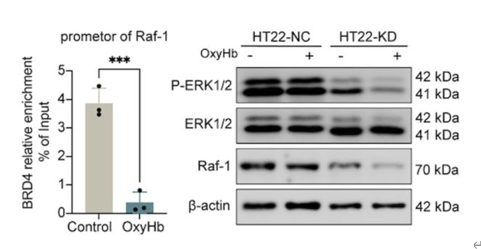
图4BRD4敲低抑制了氧合血红蛋白刺激后神经元的Raf-1/ERK1/2通路(图源:Lu et al., Neural Regen Res, 2026)
为确定Raf-1对铁死亡的作用,以Raf-1激酶抑制剂GW5074处理正常和敲低BRD4的HT-22细胞。结果表明,GW5074表现出剂量依赖性的HT-22生长抑制作用,亚铁染色显示,KD + GW5074组溶酶体内的亚铁明显上调。上述铁死亡和自噬相关基因在mRNA水平也呈现不同程度的上调。在蛋白水平上,GW5074和BRD4抑制刺激后,LC3B-II水平显著升高,谷胱甘肽过氧化物酶4、FTH1、P62和ERK1/2磷酸化水平降低。上述结果提示,抑制BRD4通过Raf-1/ERK1/2途径诱导HT-22细胞的铁蛋白自噬过程。
为深入研究神经元BRD4对蛛网膜下腔出血诱导的早期脑损伤的影响,行侧脑室注射含hsyn特异性启动子的腺病毒相关病毒,以实现靶向下调蛛网膜下腔出血小鼠神经元BRD4表达。结果发现,其大脑皮质组织中Fe2+含量明显增加,谷胱甘肽过氧化物酶4和相关蛋白表达得到抑制。综上所述,靶向神经元BRD4抑制加重了神经元的铁蛋白自噬,进一步导致蛛网膜下腔出血后神经元铁死亡(图5)。
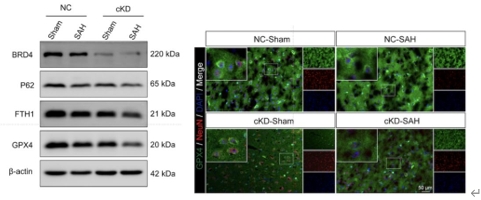
图5靶向神经元BRD4抑制通过加重铁自噬诱导蛛网膜下腔出血后神经元铁死亡(图源:Lu et al., Neural Regen Res, 2026)
最后使用改良加西亚评分和平衡木测试评估小鼠短期神经功能缺损,转棒实验、水迷宫实验和旷场实验评估小鼠在蛛网膜下腔出血后远期的神经功能恢复情况。结果表明,抑制神经元BRD4可能会加重蛛网膜下腔出血后的短期和长期神经行为结果。
总的来说,蛛网膜下腔出血后大脑皮质神经元BRD4表达减少,且铁死亡相关通路被激活。靶向敲除神经元BRD4可促进神经元铁死亡,加重小鼠蛛网膜下腔出血后的短期和长期神经功能缺损。这种调节可能是通过Raf-1/ERK1/2信号通路介导的。这是BRD4在中枢神经系统疾病领域的又一全新的发现,为该疾病的认识提供了新的思路,也为相关的脑保护药物的开发开辟了新的道路。
当然该研究也存在一定性局限性。实验仅关注BRD4对大脑皮质神经元的影响,而不是其他中枢神经系统细胞或这全脑组织的影响,BRD4在蛛网膜下腔出血后其他细胞和病理过程中的作用值得进一步研究。此外,BRD4-Raf-1/ERK1/2信号通路调控铁蛋白自噬以及神经元铁死亡这一过程的体内调控机制有待进一步阐明。最后,敲低BRD4可以下调谷胱甘肽过氧化物酶4蛋白水平,这表明BRD4相关的铁下垂也可能涉及其他途径。此外,BRD4作为一种重要的表观遗传调控因子,可能通过表观遗传调控来调控铁下垂,其具体机制有待进一步研究。
原文链接:https://doi.org/10.4103/NRR.NRR-D-24-00147
参考文献
[1] Fujii M, Yan J, Rolland WB, et al. Early brain injury, an evolving frontier in subarachnoid hemorrhage research. Transl Stroke Res. 2013;4(4):432-446.
[2] Song S, Hua Y, Keep RF, et al. A new hippocampal model for examining intracerebral hemorrhage-related neuronal death: effects of deferoxamine on hemoglobin-induced neuronal death. Stroke. 2007;38(10):2861-2863.
[3] Li Y, Liu Y, Wu P, et al. Inhibition of ferroptosis alleviates early brain injury after subarachnoid hemorrhage in vitro and in vivo via reduction of lipid peroxidation. Cell Mol Neurobiol. 2021;41(2):263-278.
[4] Zhou Y, Gu Y, Liu J. BRD4 suppression alleviates cerebral ischemia-induced brain injury by blocking glial activation via the inhibition of inflammatory response and pyroptosis. Biochem Biophys Res Commun. 2019;519(3):481-488.
[5] Sui S, Zhang J, Xu S, et al. Ferritinophagy is required for the induction of ferroptosis by the bromodomain protein BRD4 inhibitor (+)-JQ1 in cancer cells. Cell Death Dis. 2019;10(5):331.
[6] Zhang Z, Yao Z, Wang L, et al. Activation of ferritinophagy is required for the RNA-binding protein ELAVL1/HuR to regulate ferroptosis in hepatic stellate cells. Autophagy. 2018;14(12):2083-2103.




